
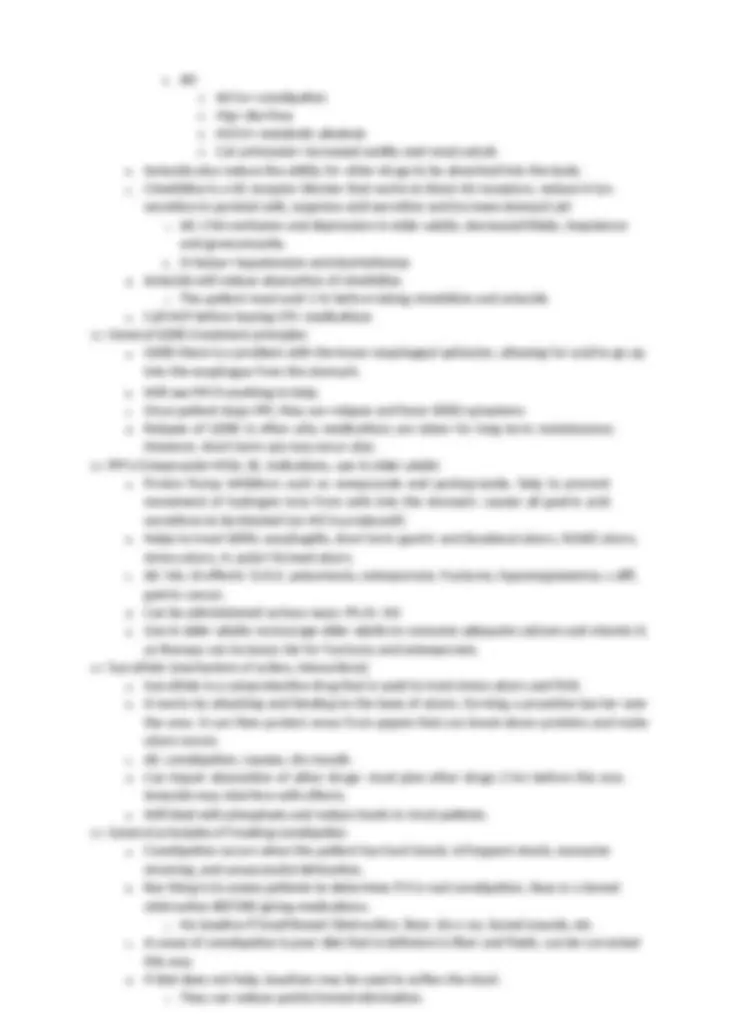
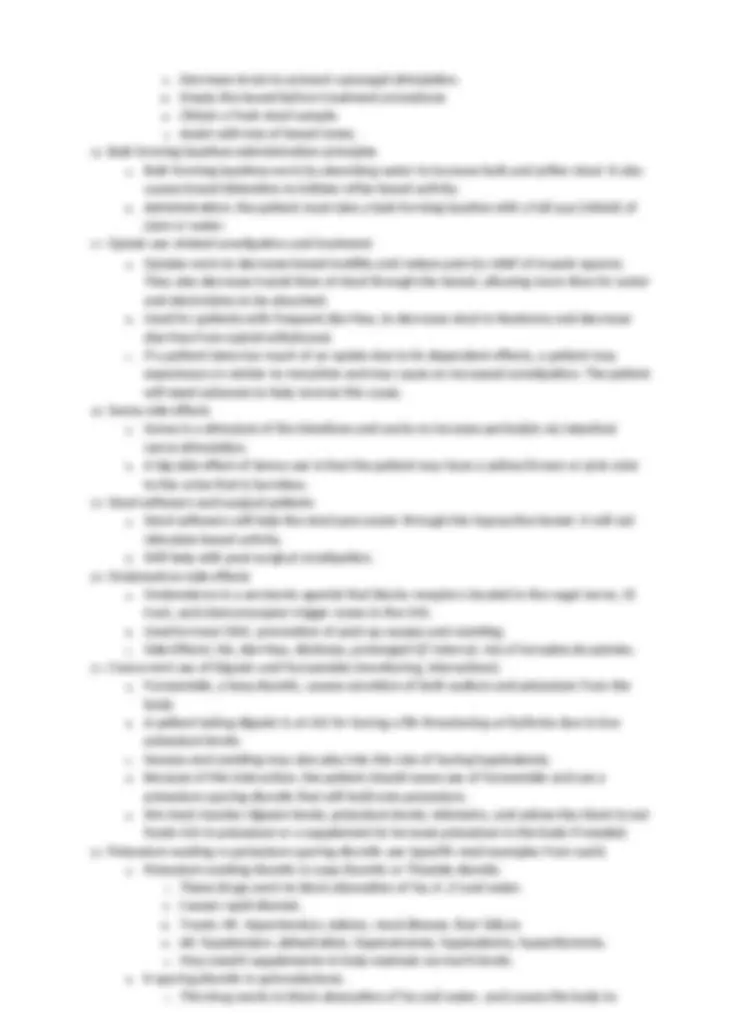
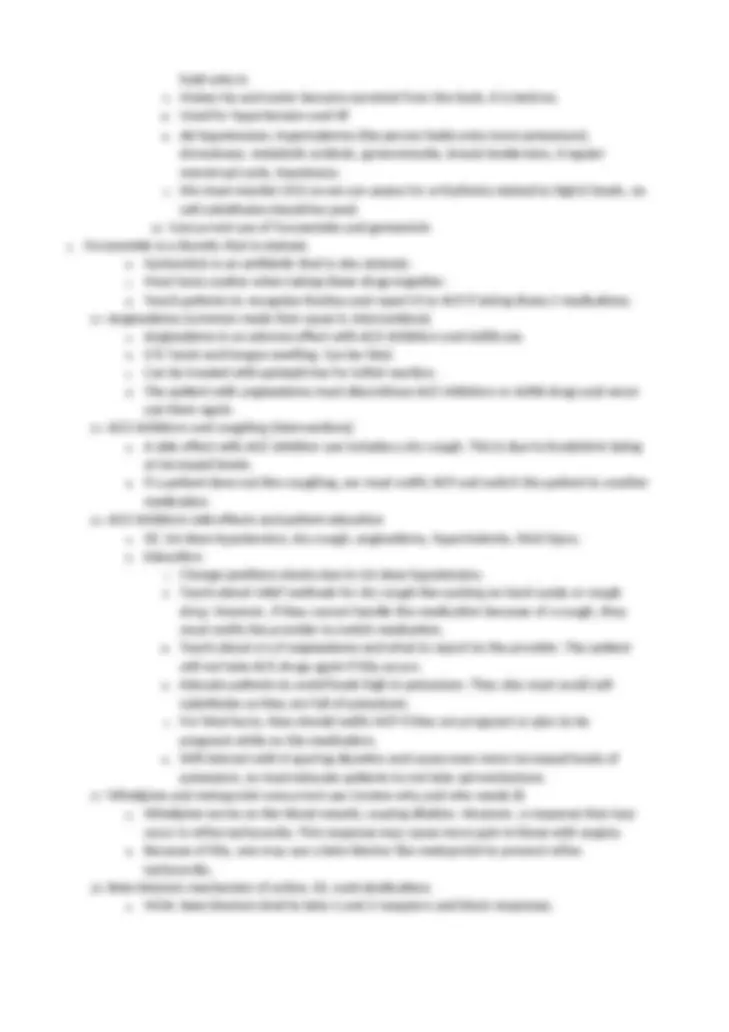
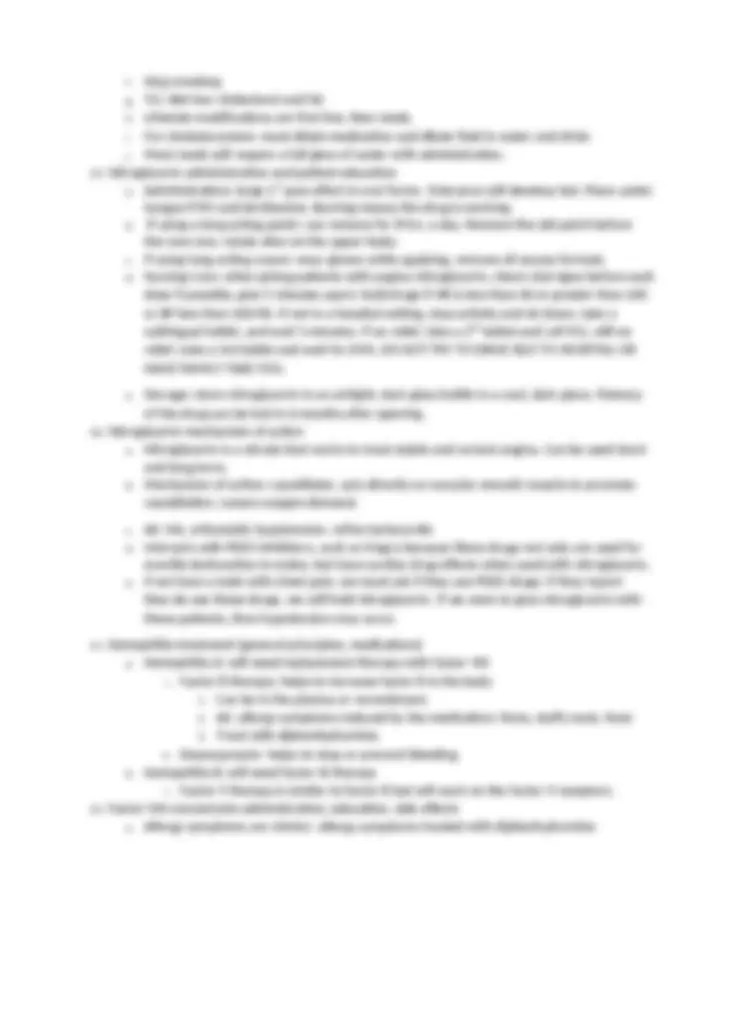
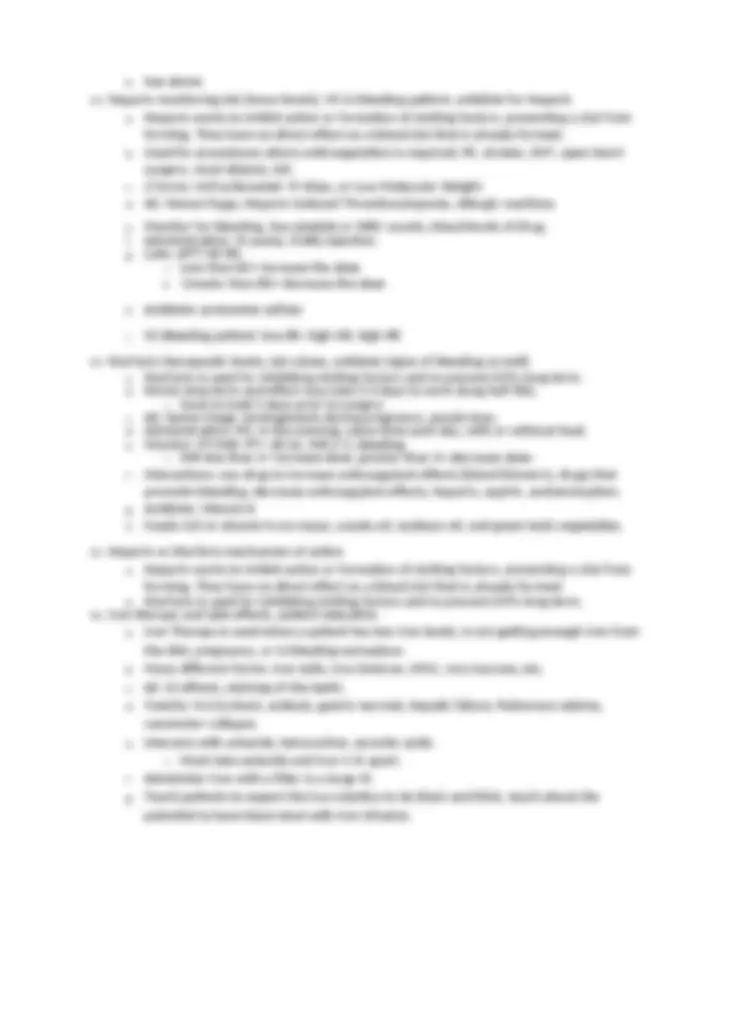
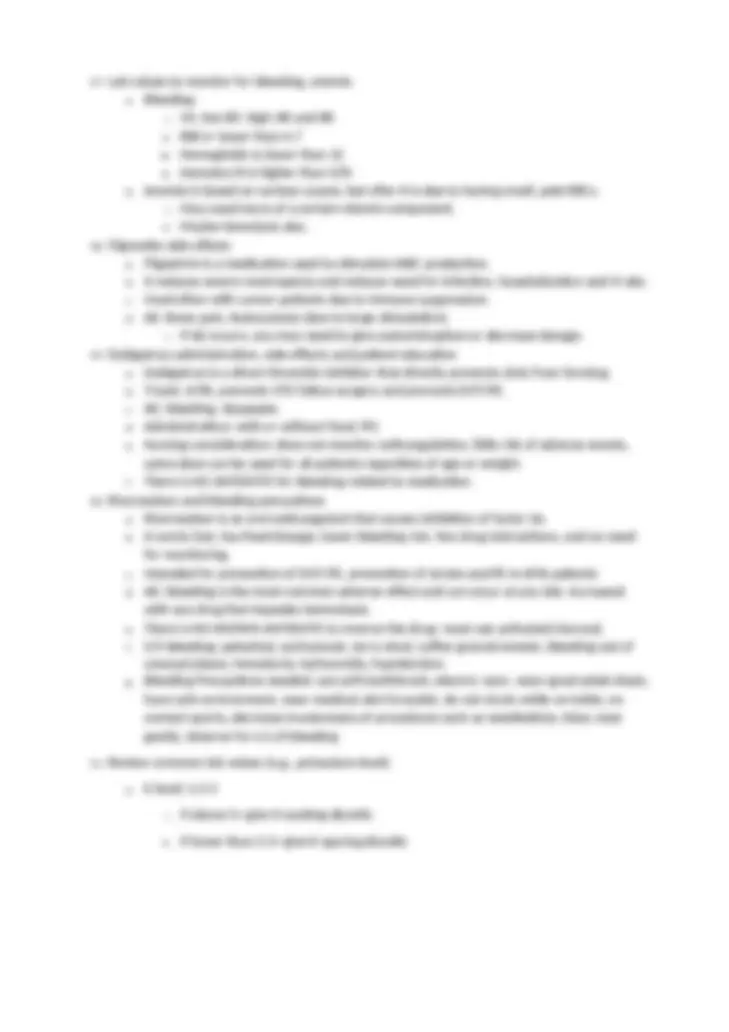


Study with the several resources on Docsity

Earn points by helping other students or get them with a premium plan


Prepare for your exams
Study with the several resources on Docsity

Earn points to download
Earn points by helping other students or get them with a premium plan
Community
Ask the community for help and clear up your study doubts
Discover the best universities in your country according to Docsity users
Free resources
Download our free guides on studying techniques, anxiety management strategies, and thesis advice from Docsity tutors
NCLEX EXAM 2 NURS -2474 STUDY GUIDE 2024 A+ Southern New Hampshire UniversitySchool name NURS 2474 03/01/2024
Typology: Exams
1 / 11

This page cannot be seen from the preview
Don't miss anything!







b. Long term: salmeterol, ipratropium, theophylline, montelukast ,fluticasone
ii. Decrease strain to prevent vasovagal stimulation. iii. Empty the bowel before treatment procedures iv. Obtain a fresh stool sample. v. Assist with loss of bowel tones.
hold onto K. ii. Makes Na and water become excreted from the body, K is held on. iii. Used for hypertension and HF iv. AE:hypotension, hyperkalemia (the person holds onto more potassium), drowsiness, metabolic acidosis, gynecomastia, breast tenderness, irregular menstrual cycle, impotence. v. We must monitor ECG so we can assess for arrhythmia related to high K levels, no salt substitutes should be used.
f. Stop smoking g. TLC diet low cholesterol and fat h. Lifestyle modifications are first line, then meds. i. For cholestyramine- must dilute medication and dilute fluid in water and drink. j. Most meds will require a full glass of water with administration.
iii. Assess telemetry with all patients receiving drugs that can alter K levels due to potential for arrhythmias that can be deadly b. Na level: 135- 145 c. Kidney labs: must look to see if kidneys are functioning and can tolerate drug effects. i. BUN:7-20 mg/dl ii. Creatine: 0.8-1.4 mg/dl iii. Specific gravity: 1.005 to 1. d. RBC: 4.7-6. i. Low RBC levels may mean anemia or bleeding someplace e. WBC: 5000- 10000 i. Low WBC count means risk for infection ii. High count means there may be active infection f. Platelet: 150000- i. Low platelet level means risk for bleeding g. H/H: 12-18/37-52% h. TG: less than 150 i. HDL: less than 40 i. Must have good physical activity to bring it up. j. LDL: less than 100 k. Digoxin level: 0.5-2. l. aPTT: 60- 80 i. Less than 60= increase the dose ii. More than 80= decrease the dose m. PT/INR: 18-24, 2- 3 i. Less than 2= increase drug dose ii. More than 3= decease drug dose